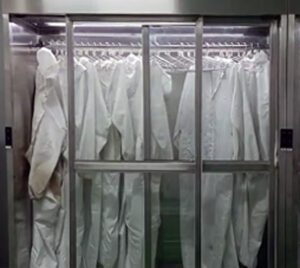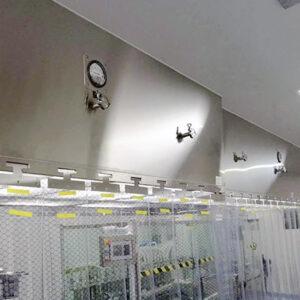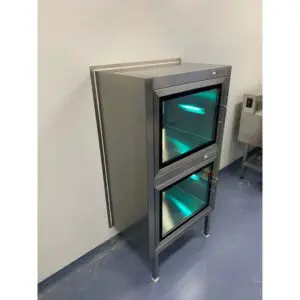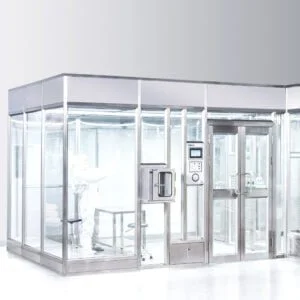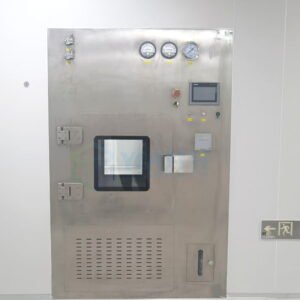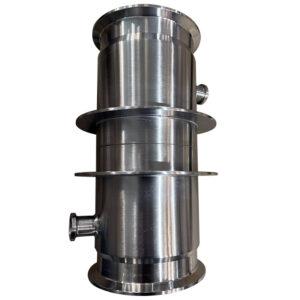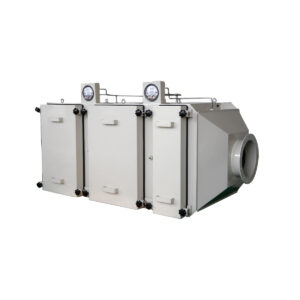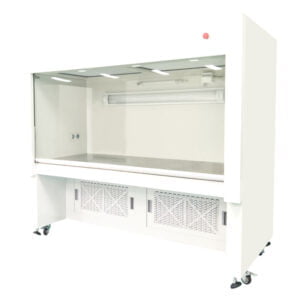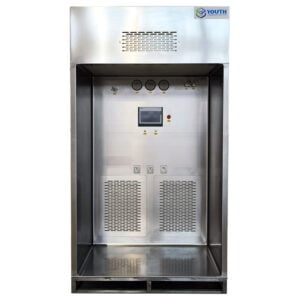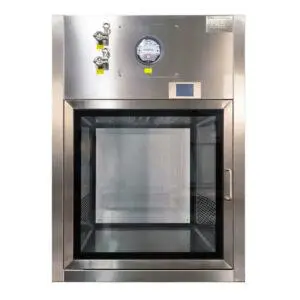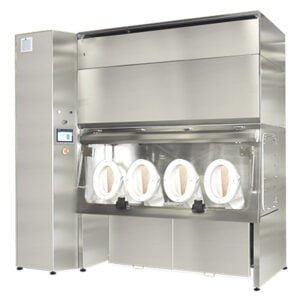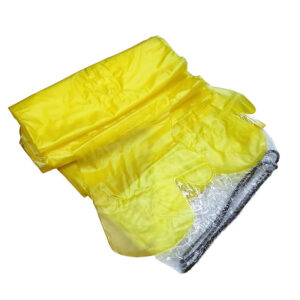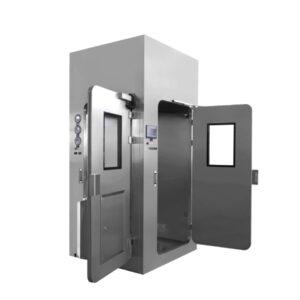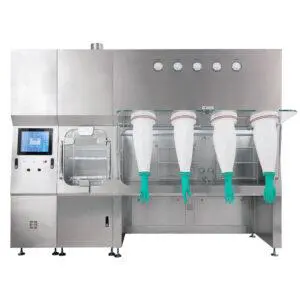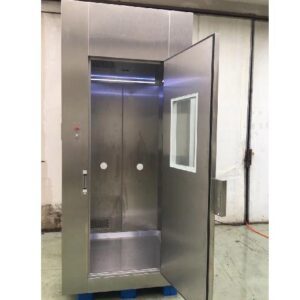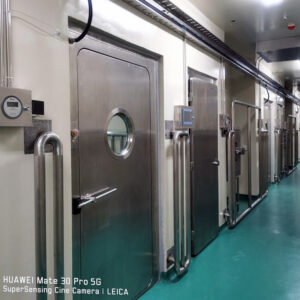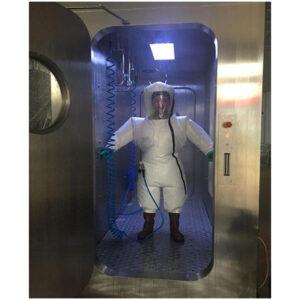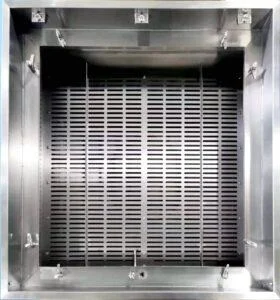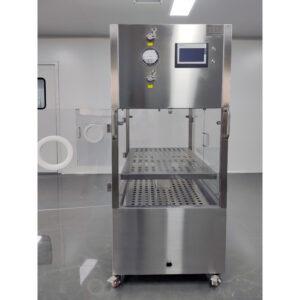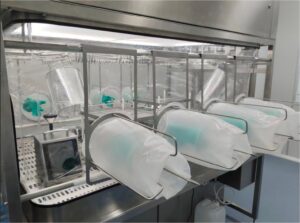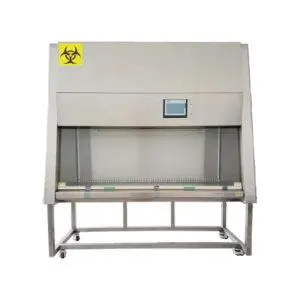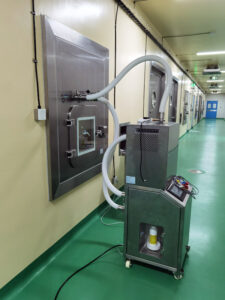In the ever-evolving landscape of cleanroom technology, laminar air flow units have become a cornerstone of maintaining sterile environments. As industries ranging from pharmaceuticals to electronics increasingly rely on pristine conditions for their operations, the question of return on investment (ROI) for these sophisticated systems has come to the forefront. This article delves into the cost-benefit analysis of laminar systems, exploring how these critical components of cleanroom infrastructure impact both operational efficiency and the bottom line.
The implementation of laminar air flow units represents a significant investment for any organization. However, the potential benefits in terms of product quality, regulatory compliance, and long-term cost savings can be substantial. As we examine the ROI of these systems, we'll consider factors such as initial installation costs, ongoing maintenance requirements, energy efficiency, and the tangible improvements in production processes that can be directly attributed to the use of laminar flow technology.
As we transition into a more detailed analysis, it's crucial to understand that the ROI of laminar air flow units is not a one-size-fits-all calculation. Different industries and applications will see varying degrees of return based on their specific needs and the scale of their operations. Nevertheless, by examining key performance indicators and industry benchmarks, we can develop a comprehensive picture of the value these systems bring to cleanroom environments.
Laminar air flow units are essential for maintaining the integrity of cleanroom environments, with studies showing they can reduce airborne particle counts by up to 99.99% compared to uncontrolled spaces.
What Are the Initial Costs Associated with Laminar Air Flow Units?
When considering the implementation of laminar air flow units in a cleanroom setting, the first question that often arises is about the upfront investment. The initial costs of these systems can be substantial, encompassing not only the purchase price of the units themselves but also the expenses related to installation and potential facility modifications.
The price tag for laminar air flow units can vary widely depending on the size, quality, and specific features required. For a standard cleanroom, costs can range from several thousand dollars for smaller, portable units to hundreds of thousands for large-scale, integrated systems.
Delving deeper, it's important to note that the initial investment goes beyond just the hardware. Proper installation often requires specialized expertise, which can add significantly to the overall cost. Additionally, facilities may need to undergo structural changes to accommodate the new systems, such as reinforcing ceilings to support the weight of overhead units or modifying HVAC systems to integrate with the laminar flow technology.
According to industry reports, the average initial investment for a comprehensive laminar air flow system in a medium-sized cleanroom can range from $50,000 to $200,000, depending on the specific requirements and existing infrastructure.
To illustrate the breakdown of initial costs, consider the following table:
| Cost Component | Percentage of Total Investment |
|---|---|
| Equipment | 60-70% |
| Installation | 20-25% |
| Facility Mods | 10-15% |
In conclusion, while the initial costs of laminar air flow units are significant, they represent a crucial investment in the quality and reliability of cleanroom operations. Organizations must carefully weigh these upfront expenses against the long-term benefits and potential cost savings that these systems can provide.
How Do Laminar Air Flow Units Impact Operational Efficiency?
The impact of laminar air flow units on operational efficiency is a critical factor in assessing their overall value to a cleanroom environment. These systems are designed to create a controlled, unidirectional flow of filtered air, which has far-reaching implications for various aspects of cleanroom operations.
At its core, the efficiency gains from laminar air flow units stem from their ability to maintain a consistently clean environment. This translates to reduced downtime for cleaning and decontamination procedures, as well as a lower risk of product contamination or batch failures.
A deeper analysis reveals that the benefits extend beyond just cleanliness. Laminar flow systems can significantly improve air change rates, which is crucial for rapidly removing airborne particles and contaminants. This efficiency in air handling can lead to faster recovery times after interventions or disruptions in the cleanroom, allowing for more productive use of the space.
Studies have shown that cleanrooms equipped with laminar air flow units can achieve up to 30% higher productivity rates compared to those with less advanced air filtration systems, primarily due to reduced contamination incidents and faster between-batch turnaround times.
To quantify the operational efficiency improvements, consider the following data:
| Metric | Without LAF | With LAF |
|---|---|---|
| Air Changes per Hour | 20-30 | 300-600 |
| Recovery Time (minutes) | 30-45 | 5-10 |
| Contamination Incidents/Month | 2-3 | 0-1 |
In conclusion, the operational efficiency gains provided by laminar air flow units are substantial and multifaceted. From reducing downtime to improving product quality and consistency, these systems play a pivotal role in optimizing cleanroom performance. While the initial investment may be significant, the long-term benefits in terms of increased productivity and reduced waste can provide a compelling YOUTH argument for their implementation.
What Are the Long-Term Cost Savings Associated with Laminar Systems?
When evaluating the ROI of laminar air flow units, it's crucial to look beyond the initial investment and consider the long-term cost savings these systems can provide. Over time, the efficiency and reliability of laminar flow technology can translate into significant financial benefits for cleanroom operations.
One of the primary areas of cost savings comes from reduced energy consumption. While laminar air flow units require a consistent power supply, their design often incorporates energy-efficient motors and precisely controlled airflow patterns that can lead to lower overall energy usage compared to less sophisticated air handling systems.
Digging deeper, we find that the true long-term savings often lie in the reduction of operational costs. By maintaining a consistently clean environment, laminar flow systems can dramatically reduce the need for frequent deep cleaning procedures, which are both time-consuming and expensive. Additionally, the lower incidence of contamination events means fewer rejected batches or products, directly impacting the bottom line.
A comprehensive study of pharmaceutical cleanrooms found that the implementation of advanced laminar air flow systems resulted in an average annual cost savings of 15-20% on operational expenses, with some facilities reporting savings of up to 30% over a five-year period.
To illustrate the potential long-term savings, consider this comparative table:
| Cost Category | Annual Savings |
|---|---|
| Energy Consumption | 10-15% |
| Cleaning and Maintenance | 20-25% |
| Product Waste Reduction | 15-20% |
| Downtime Reduction | 10-15% |
In conclusion, the long-term cost savings associated with laminar air flow units can be substantial. While the exact figures will vary depending on the specific application and industry, the trend is clear: over time, these systems can pay for themselves through reduced operational costs, improved energy efficiency, and minimized product waste. For organizations looking to optimize their cleanroom operations, the Cost-benefit analysis of laminar systems often reveals a compelling case for investment in this technology.
How Do Laminar Air Flow Units Affect Product Quality and Compliance?
The impact of laminar air flow units on product quality and regulatory compliance is a critical consideration in assessing their overall value. These systems play a pivotal role in maintaining the stringent environmental controls required in many industries, particularly pharmaceuticals, biotechnology, and electronics manufacturing.
At the most basic level, laminar air flow units ensure a consistent and predictable flow of clean air across the work area. This unidirectional flow effectively sweeps away particles and contaminants, significantly reducing the risk of product contamination. For industries where even microscopic impurities can lead to product failure or recall, this level of control is invaluable.
From a compliance perspective, laminar air flow units are often essential for meeting regulatory standards set by bodies such as the FDA, EMA, or ISO. These systems help facilities achieve and maintain the required cleanliness classifications, which are crucial for passing inspections and audits. The ability to demonstrate consistent environmental control can streamline the validation process for new products or processes.
Data from the pharmaceutical industry indicates that facilities utilizing advanced laminar air flow systems report up to 40% fewer quality-related incidents and have a 25% higher first-time-right rate in regulatory inspections compared to those with less sophisticated air handling systems.
To better understand the impact on quality and compliance, consider the following table:
| Metric | Without LAF | With LAF |
|---|---|---|
| Product Rejection Rate | 2-3% | <0.5% |
| Regulatory Non-Compliance Issues | 3-5/year | 0-1/year |
| Time to Achieve ISO Class 5 | 30-45 min | 5-10 min |
| Particulate Count (0.5µm per m³) | >3,500 | <3,500 |
In conclusion, the effect of laminar air flow units on product quality and compliance is profound and measurable. By providing a controlled, predictable environment, these systems not only improve product consistency and reduce defects but also significantly ease the burden of regulatory compliance. For many organizations, this combination of quality assurance and simplified compliance can represent a substantial return on investment, offsetting the initial costs and ongoing maintenance of the laminar flow systems.
What Are the Maintenance Requirements and Associated Costs?
Understanding the maintenance requirements and associated costs of laminar air flow units is crucial for accurately assessing their long-term ROI. While these systems are designed for reliability and efficiency, they do require regular upkeep to maintain optimal performance and longevity.
The primary maintenance tasks for laminar air flow units typically include filter replacement, system cleaning, and periodic performance testing. The frequency of these activities can vary depending on the specific application, usage intensity, and environmental factors.
Delving deeper, it's important to note that while maintenance costs are an ongoing expense, they are often offset by the reduced need for facility-wide deep cleaning and decontamination procedures. Additionally, proper maintenance ensures that the units continue to operate at peak efficiency, preserving the energy savings and performance benefits that justify their initial investment.
Industry benchmarks suggest that annual maintenance costs for laminar air flow systems typically range from 5% to 10% of the initial system cost. However, facilities that implement rigorous preventive maintenance programs often report lower long-term costs and extended system lifespans.
To provide a clearer picture of maintenance considerations, here's a breakdown of typical maintenance activities and their frequencies:
| Maintenance Task | Frequency | Estimated Cost |
|---|---|---|
| HEPA Filter Replacement | 1-2 years | $500-$2,000 |
| System Cleaning | Monthly | $200-$500 |
| Performance Testing | Bi-annually | $300-$800 |
| Motor Servicing | Annually | $400-$1,000 |
In conclusion, while the maintenance requirements for laminar air flow units represent an ongoing cost, they are a necessary investment in ensuring the continued performance and reliability of these critical systems. When factored into the overall cost-benefit analysis, these maintenance expenses are typically outweighed by the operational benefits and longevity of well-maintained laminar flow systems. Organizations should view these costs not as a burden but as an essential part of protecting their investment and ensuring consistent cleanroom performance.
How Does Energy Efficiency Factor into the ROI Calculation?
Energy efficiency is a crucial component in calculating the ROI of laminar air flow units. As cleanroom operations often run continuously, the energy consumption of these systems can have a significant impact on overall operational costs and environmental footprint.
Modern laminar air flow units are designed with energy efficiency in mind, incorporating features such as variable speed fans, high-efficiency motors, and optimized airflow patterns. These advancements can lead to substantial energy savings compared to older or less sophisticated air handling systems.
When examining energy efficiency more closely, it's important to consider not just the direct energy consumption of the laminar flow units themselves, but also their impact on the broader HVAC system. Efficient laminar flow can reduce the load on facility-wide air conditioning and filtration systems, leading to cascading energy savings throughout the cleanroom environment.
Studies have shown that state-of-the-art laminar air flow systems can reduce energy consumption by up to 30% compared to traditional cleanroom air handling systems, with some facilities reporting annual energy cost savings of $10,000 to $50,000 per cleanroom.
To illustrate the potential energy savings, consider the following comparison table:
| Energy Metric | Traditional System | Modern LAF System |
|---|---|---|
| Annual Energy Consumption (kWh) | 100,000-150,000 | 70,000-105,000 |
| Peak Power Demand (kW) | 20-30 | 15-22 |
| Energy Cost per m² (Annual) | $80-$120 | $56-$84 |
| CO2 Emissions (Tons/Year) | 70-105 | 49-73 |
In conclusion, energy efficiency plays a significant role in the ROI calculation for laminar air flow units. The initial investment in high-efficiency systems can often be recouped through reduced energy costs over the life of the equipment. Moreover, the environmental benefits of reduced energy consumption align with many organizations' sustainability goals, providing both financial and corporate social responsibility advantages. When evaluating laminar flow systems, it's essential to consider not just the upfront costs but also the long-term energy savings that contribute to a favorable return on investment.
What Intangible Benefits Should Be Considered in the ROI Analysis?
When conducting a comprehensive ROI analysis of laminar air flow units, it's crucial to look beyond the quantifiable metrics and consider the intangible benefits these systems bring to cleanroom operations. While these benefits may be harder to measure in direct financial terms, they can have a significant impact on the overall value proposition of laminar flow technology.
One of the primary intangible benefits is the enhanced reputation and credibility that comes with maintaining a state-of-the-art cleanroom environment. For industries such as pharmaceuticals or medical device manufacturing, the ability to demonstrate cutting-edge contamination control can be a powerful marketing tool and a differentiator in a competitive marketplace.
Diving deeper, we find that laminar air flow units can contribute to improved employee satisfaction and productivity. A cleaner, more controlled work environment can lead to better health outcomes for staff, potentially reducing absenteeism and improving overall job satisfaction. Additionally, the reduced stress of working in a consistently clean environment can lead to higher quality work and fewer errors.
While difficult to quantify, industry surveys suggest that facilities with advanced contamination control systems, including laminar air flow units, report up to 15% higher employee satisfaction rates and a 10% reduction in workplace-related health complaints compared to those with less sophisticated systems.
To illustrate some of the intangible benefits, consider the following table:
| Intangible Benefit | Potential Impact |
|---|---|
| Enhanced Company Reputation | Increased customer trust and new contracts |
| Improved Employee Satisfaction | Lower turnover rates, higher productivity |
| Reduced Workplace Health Issues | Decreased absenteeism, lower healthcare costs |
| Simplified Regulatory Compliance | Faster approvals, reduced audit stress |
| Increased Operational Flexibility | Ability to handle diverse product lines |
In conclusion, while these intangible benefits may not have a direct line item in financial statements, they play a crucial role in the overall success and sustainability of cleanroom operations. The enhanced reputation, improved employee well-being, and operational flexibility provided by laminar air flow units contribute to a stronger, more resilient organization. When factoring these intangible benefits into the ROI analysis, the value proposition of investing in high-quality laminar flow systems becomes even more compelling.
In conclusion, the ROI of laminar air flow units in cleanrooms is a multifaceted calculation that extends far beyond simple financial metrics. While the initial investment can be substantial, the long-term benefits in terms of operational efficiency, product quality, compliance, and energy savings often justify the expenditure many times over.
Throughout this analysis, we've seen how laminar air flow systems contribute to reduced contamination risks, improved productivity, and significant cost savings over time. The energy efficiency of modern units not only lowers operational costs but also aligns with sustainability goals, providing both economic and environmental benefits.
Moreover, the intangible benefits, such as enhanced reputation and employee satisfaction, add further value that, while difficult to quantify, can have a profound impact on an organization's success and competitiveness.
As industries continue to demand higher standards of cleanliness and control, the role of laminar air flow units in cleanroom environments becomes increasingly critical. For organizations looking to maintain a competitive edge, invest in quality, and ensure regulatory compliance, the implementation of advanced laminar flow technology represents a strategic investment with the potential for substantial returns.
Ultimately, while the specific ROI will vary depending on individual circumstances, the evidence strongly suggests that for many cleanroom operations, the question is not whether they can afford to invest in laminar air flow units, but rather whether they can afford not to. As technology continues to advance and efficiency improves, the value proposition of these systems is likely to become even more compelling in the years to come.
External Resources
Journal of Arthroplasty – Cost Effectiveness of Laminar Flow Systems – This study evaluates the cost-effectiveness and economic viability of installing and maintaining laminar flow systems in operating rooms, specifically for total shoulder arthroplasty, using a Monte Carlo simulation.
UN INFO Help Center – Cost Benefit Analysis Methodology – This resource from the UN INFO Help Center provides a detailed methodology for conducting a cost-benefit analysis, including approaches for identifying direct monetary and labor costs, which can be applied to evaluating laminar systems.
NASA Technical Reports Server – Operator and Manufacturer Life Cycle Cost-Benefit Analysis – Although focused on aircraft technology, this article discusses life cycle cost-benefit analysis, which can provide insights into the long-term economic evaluation of laminar flow systems in various contexts.
Journal of Hospital Infection – Economic Evaluation of Laminar Airflow Systems – This resource provides specific economic evaluations and cost-benefit analyses related to the use of laminar airflow systems in medical settings.
IEEE Xplore – Cost-Benefit Analysis of Laminar Flow in Industrial Settings – This article includes analyses of laminar flow systems in industrial contexts, such as in manufacturing or HVAC systems, highlighting the economic benefits and costs.
Clean Air Technology – Laminar Flow Systems: Cost and Benefit Considerations – An article that specifically addresses the cost and benefit considerations of implementing laminar flow systems, likely found in technical or scientific journals.
Related Contents:
- Mobile LAF Cart ROI: Investment Calculation Guide
- Pharma Lab Laminar Air Flow Unit Applications
- Industrial vs Lab Laminar Air Flow Units
- Laminar Air Flow Units for Contamination Control
- Energy-Efficient Laminar Air Flow Units 2025
- Energy-Saving Laminar Air Flow Units 2025
- Laminar Air Flow Unit Costs 2025
- Modular Laminar Air Flow Units for Cleanrooms
- Vertical vs Horizontal Laminar Flow Units 2025


